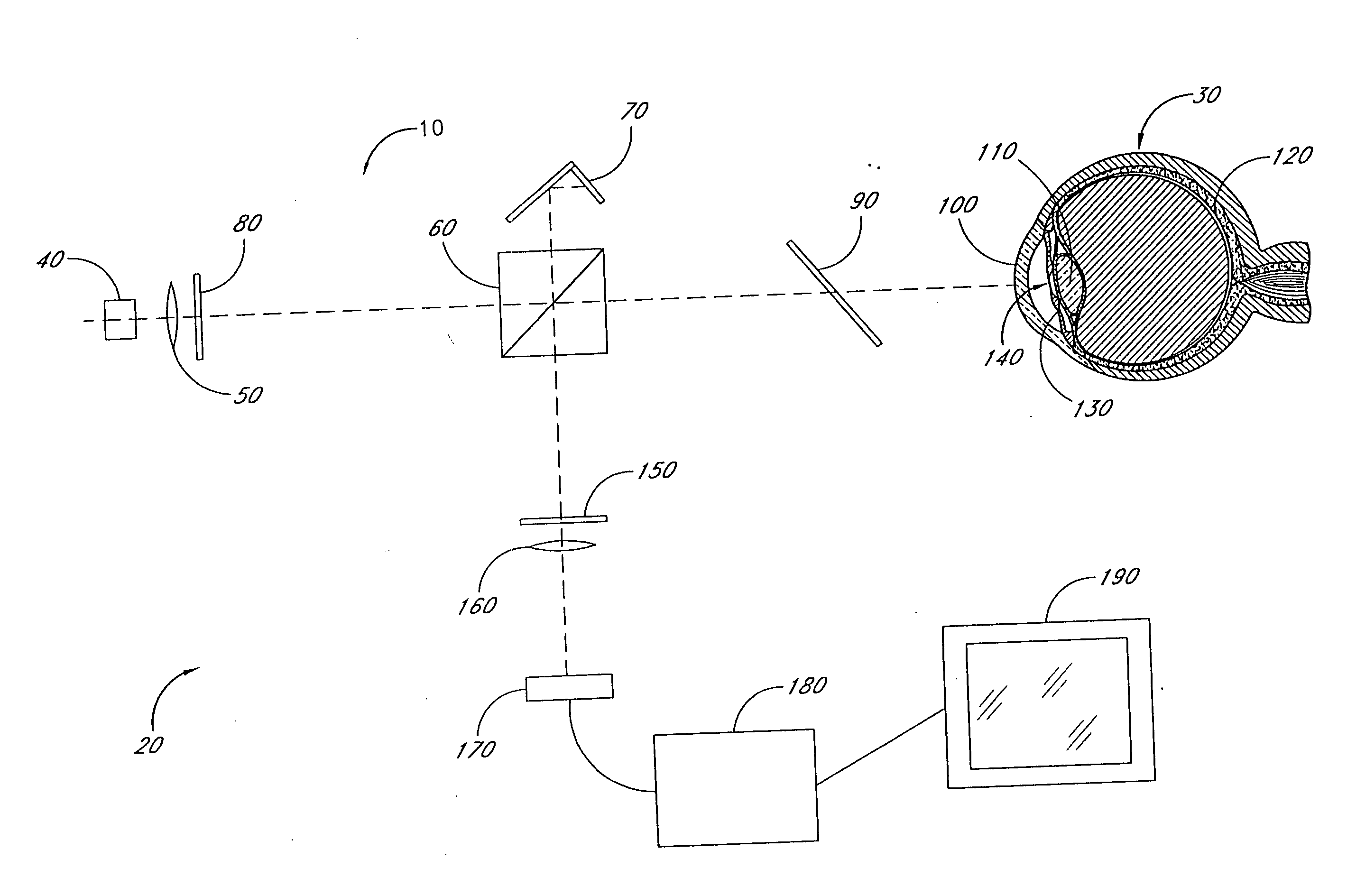Cataract imaging apparatus
a technology of cataracts and imaging apparatuses, applied in the field of cataracts, can solve the problems of reducing the contrast of the scene viewed, difficulty in determining when it is appropriate to perform surgery to remove cataracts, and affecting vision, so as to minimize the localized region of the retina and improve the contrast of the optical imag
- Summary
- Abstract
- Description
- Claims
- Application Information
AI Technical Summary
Benefits of technology
Problems solved by technology
Method used
Image
Examples
Embodiment Construction
[0023] Various preferred embodiments of instruments and methods described herein use retroillumination of the eye lens, in conjunction with a camera and a display device, and preferably a computer. The arrangement is preferably such that the patient and examiner can both observe a substantially live video or computer image of the patient's cataract, facilitating a discussion of the cataract between the examiner and patient. Automated quantification, for example of the extent and density, of the cataract is preferably performed to provide an objective criterion for deciding whether or not surgery is warranted.
[0024]FIG. 1 is a diagram of the optical components in an optical system 10 comprising one embodiment of an instrument 20 for characterizing an eye 30. Light from a source 40 of near infrared light, preferably an infrared-light-emitting diode (IRLED), passes through a first lens 50, which preferably substantially collimates, or at least substantially reduces the divergence of, ...
PUM
 Login to View More
Login to View More Abstract
Description
Claims
Application Information
 Login to View More
Login to View More - R&D
- Intellectual Property
- Life Sciences
- Materials
- Tech Scout
- Unparalleled Data Quality
- Higher Quality Content
- 60% Fewer Hallucinations
Browse by: Latest US Patents, China's latest patents, Technical Efficacy Thesaurus, Application Domain, Technology Topic, Popular Technical Reports.
© 2025 PatSnap. All rights reserved.Legal|Privacy policy|Modern Slavery Act Transparency Statement|Sitemap|About US| Contact US: help@patsnap.com



